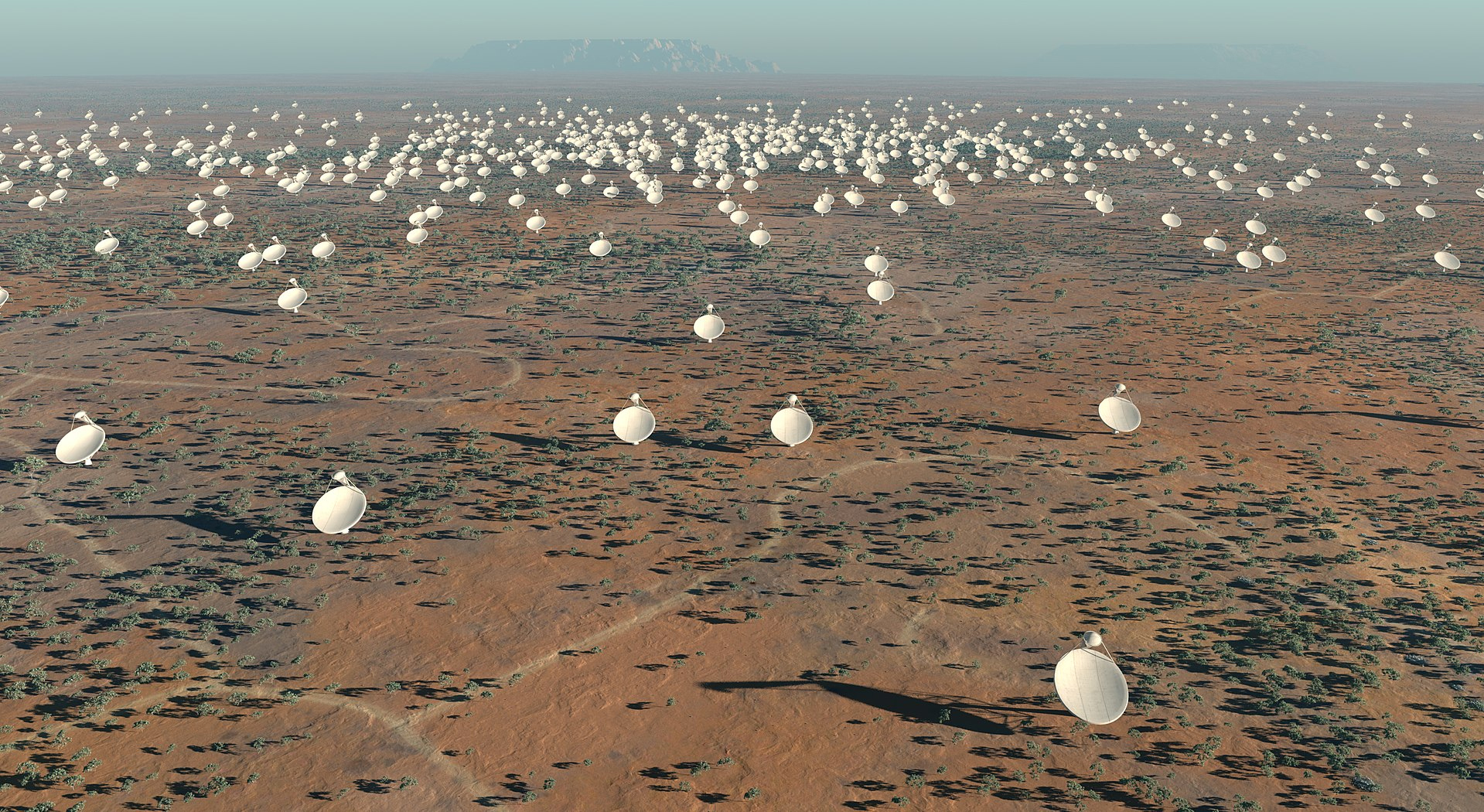
Work is getting underway today on a giant radio telescope billed as one of the 21st century’s most important science projects.
The first phases of the Single Kilometre Array, or SKA, will take the form of 200 parabolic dishes in South Africa and more than 130,000 antennae in Australia, all controlled by a supercomputer in the UK.
The cost of the SKA, including construction and operations up to 2030, is estimated to be around €1.9bn.
The design, planning and land acquisition phase of the project, which has lasted some 30 years, was brought to an end by ceremonies held in Western Australia and in South Africa’s Northern Cape region. The initial construction period is expected to be complete in 2028.
Phil Diamond, director general of the SKA Organisation, told BBC news that the first 10 years of preparation were about developing the concepts, the second 10 were spent on technology development, and the final 10 were occupied with detailed design, securing the sites, and getting governments to agree to funds.
The current members of the SKA project are China, Italy, Netherlands, Portugal and Switzerland, as well as South Africa, Australia and the UK.
The ultimate goal is to have thousands of dishes in South Africa and 1 million antennas in Australia, with a total collecting area of one square kilometre. Phase one is about one-tenth of the total.
The array will collect radio waves with frequencies of between 50 megahertz to 25 gigahertz. This will allow cosmologists, among other things, to analyse emissions originating in the first million years of the 13.7 billion-year-old universe’s existence, as well examining radio signals originating from the black holes at the centre of galaxies and examining the role of hydrogen in forming the first stars and galaxies.
Shari Breen, the observatory’s head of science operations, said one specific aim would be to explain “fast radio bursts” that have been detected. “These things output the equivalent of an entire year’s worth of energy from our Sun in just a fraction of a second. And we have no idea what they are. How is that possible? Hopefully the SKA will have an answer,” she told BBC News.
Further reading:






